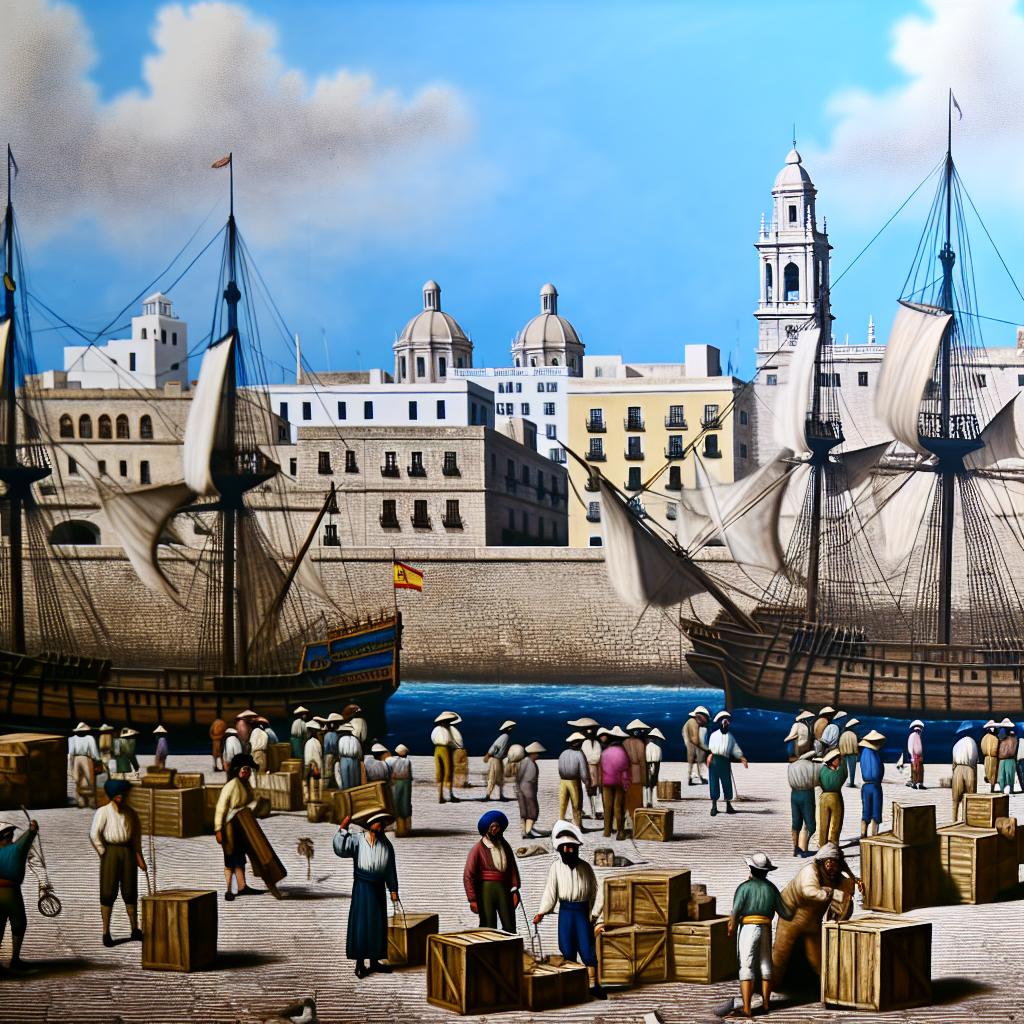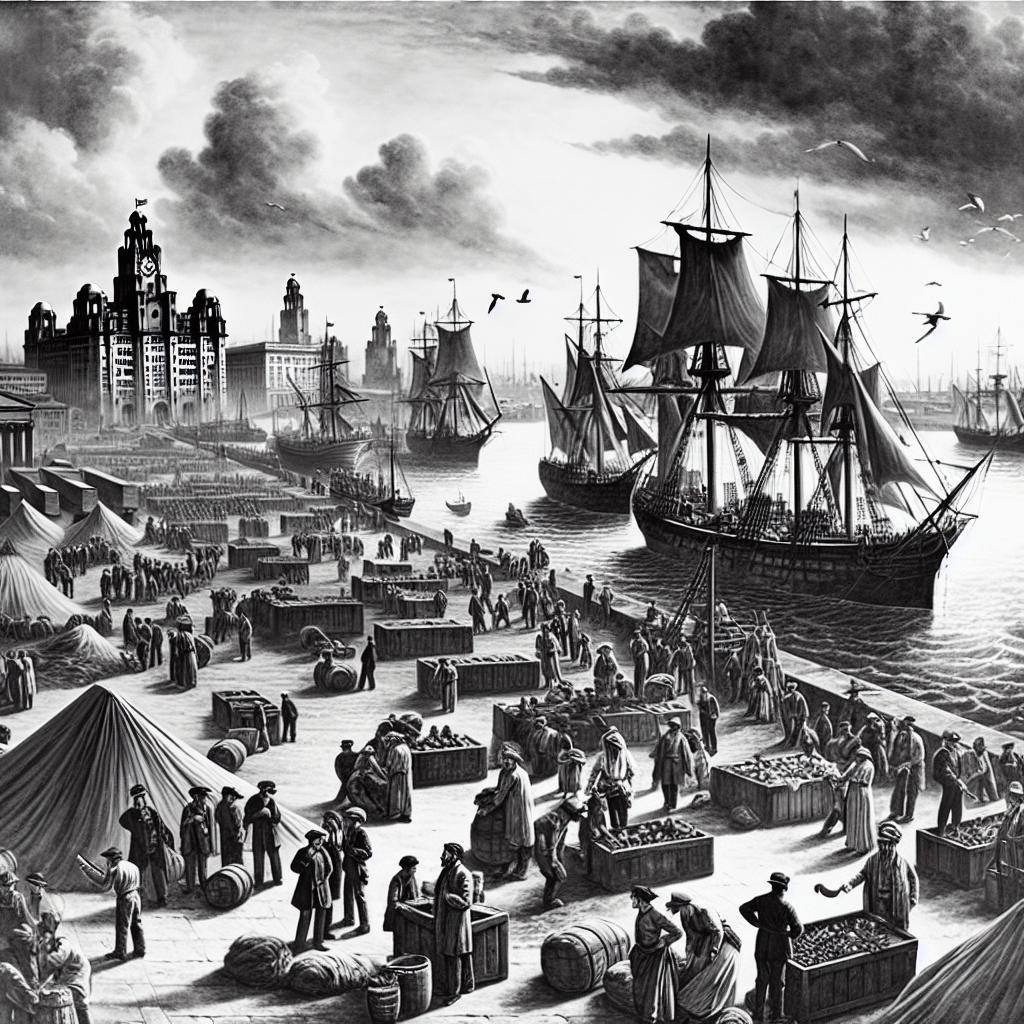Historical Significance of the Port of Cádiz
The Port of Cádiz holds a prominent place in Spanish history due to its critical role in Spanish colonial trade. Located on the southwestern coast of Spain, it served as a pivotal hub for maritime activities during the age of exploration and colonial expansion. Its natural harbor provided safe anchorage and strategic access to the Atlantic Ocean, which was instrumental in the transportation of goods, people, and ideas between Europe and the New World.
Origins and Development
Founded in 1100 BC by the Phoenicians, Cádiz is one of Europe’s oldest continuously inhabited cities. Initially, Cádiz emerged as a vital trading post due to its proximity to key maritime routes and its accessibility to natural resources. As one of the prominent city-ports established by the enterprising Phoenicians, the early commerce conducted involved goods such as silver, gold, and tin.
The strategic geographical location of Cádiz enabled it to thrive under several empires that followed. Under the Romans, Cádiz was known as Gades, and it became an essential part of the Roman Empire’s trade network through the incorporation into the province of Hispania Baetica. Roman architecture and civil engineering remnants in Cádiz are testament to the urban development that took place during their rule.
When the Moors arrived in Spain, the city experienced substantial growth. They further emphasized Cádiz’s commercial prowess, adding architectural and cultural layers that enriched its legacy. The mingling of different cultures in Cádiz during the Moorish period facilitated the exchange of cultural and scientific knowledge, thereby influencing trade and technological development.
Role in the Age of Exploration
During the 15th and 16th centuries, Cádiz gained prominence as Spain embarked on overseas explorations. As European nations embarked on the age of discovery, Spain focused on maritime expeditions, seeking new lands, resources, and trade routes. This period marked the beginning of Cádiz’s golden era as it became a key port for fleets setting sail to the Americas and other colonies.
Cádiz’s advantageous position on the Iberian Peninsula, complemented by its robust harbor infrastructure and formidable fortifications, made it an ideal departure and entry point for Spanish galleons. The city was integral to Spain’s ambitions of establishing a dominant presence in the New World. The influx of wealth from the colonies contributed to the development of Spanish naval strength, and Cádiz was at the heart of these operations.
The Casa de Cádiz
In 1717, a significant transition cemented Cádiz’s status in global trade. The Casa de Contratación, or House of Trade, was moved from Seville to Cádiz. This illustrious institution governed Spanish trade with the Americas, setting regulations, issuing permits, and managing customs duties. By relocating the Casa de Contratación, Cádiz’s role was further solidified as the primary port for incoming and outgoing colonial goods.
The presence of this institution implied that Cádiz became the focal point for processing documentation necessary for legal navigation and trade with the territories of the Spanish Empire in the Americas. The economic success of the region, boosted by the operations of the Casa, attracted traders, merchants, and numerous administrative officials. This period witnessed an economic boom, transforming Cádiz into a bustling, cosmopolitan city.
Cádiz and the Atlantic Trade
Expanding onto these events, the 18th century marked the zenith of Cádiz as the nucleus of transatlantic trade. The port thrived on the exchange of goods such as precious metals, sugar, cocoa, tobacco, and textiles. This intercontinental trade was lucrative, and Cádiz became one of the wealthiest trading cities in Europe.
International merchants established operations in Cádiz, which became a melting pot of cultures and ideas, leading to significant urban development. The wealth generated from the Atlantic trade was pivotal in funding architectural and infrastructural advancements, such as baroque churches, elegant squares, and ornate merchant mansions, many of which still decorate the city with their contrasting blend of cultural styles.
Impact of the Bourbon Reforms
Under the Bourbon monarchy, the 18th-century reforms were enacted with the intention of improving Spanish colonial governance and economic efficiency. The Bourbon reforms brought administrative restructuring, financial regulation, and economic liberalization measures aimed partly at breaking the monopoly held by Cádiz over trade with the Americas.
While these changes included opening additional ports to trade, thereby reducing Cádiz’s monopoly, they paradoxically stimulated modernization initiatives within the port itself, making it more competitive. The reforms facilitated the diversification of trade-related activities, emphasizing productivity and efficiency, which in turn had a transformative impact on the economic landscape of Cádiz.
Decline and Legacy
Despite these advancements, the decline of Spanish colonial power became apparent toward the end of the 18th century. The rise of independence movements across Latin America in the 19th century led to the dissolution of many Spanish territories overseas, significantly reducing the volume of trade conducted through Cádiz.
Although its significance in global trade waned, Cádiz remained a vital commercial port through the 19th and into the 20th century. The legacy of its historical prominence and the marks of its former wealth are still visible in the architecture that adorns the city. Museum exhibits and restored historic sites within Cádiz continue to detail the illustrious past, providing a living testament to an era that not only defined the city but also significantly impacted the trajectory of global commerce.
In essence, the Port of Cádiz stands as a symbol of the dynamic interactions in human history, driven by exploration, ambition, and trade. Its contribution to Spain’s maritime dominance during the age of exploration and its pivotal role in the economic developments of the colonial era underscore its enduring historical significance.




